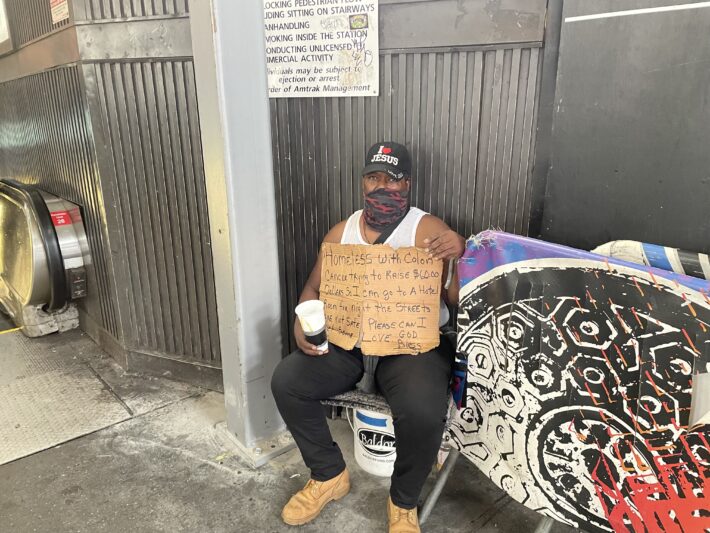
Aquis Body Spa, a massage parlor on West 36th Street near Penn Station, took a major financial hit during the pandemic. Since its reopening last summer, the owner, Coco Zhang, said she has been struggling to pay off her snowballing debt and the increasing cost for supplies due to inflation. She said she already had enough on her plate when she noticed another challenge to her business.
“I’ve realized there have been a lot more homeless people around Penn Station,” Zhang said. “Sometimes customers want to come in but are scared away.” Zhang said she had to repeatedly ask a group of people who were loitering and panhandling outside of her store to leave.
Last spring, the City’s Department of Homeless Services relocated 10,000 people from unsafe, crowded shelters to 139 hotels citywide, according to NY1. A breakdown of the so-called “covid hotels,” exclusively obtained by NY1, indicates there are 12 hotels housing the homeless in Community District 5, which includes the area near Penn Station. That’s the highest number of converted hotels in any area of the City. One of the hotels on the list is Springhill Suites Time Square South, which is located on the same block as Zhang’s store. Zhang said she started noticing the increase in the homeless population after the hotel was turned into a shelter.
Complaints related to the homeless population are on the rise in this area. According to NYC Open Data, there were 4,315 related 311 calls in Community District 5 in 2019. In 2020, calls increased by 15% to 4,981 calls. Most of these complaints were about homeless encampments.
Julia Guo, who lives near Homewood Suites, another converted hotel, says since the hotel became a shelter, she has stumbled over people idling outside her building almost every day.
“I feel unsafe and very unpleasant walking out every day, and this is actually the reason why I’m moving to Brooklyn soon,” Guo said.
Citywide, there were 77,943 people living without homes on a single night in 2020, based on Department of Housing and Urban Development data. Among those, an estimated 3,857 unsheltered individuals lived on streets and subways every night, according to the NYC Homeless Outreach Population Estimate Survey. However, according to Coalition for the Homeless, the surveys “significantly underestimate the number of unsheltered homeless New Yorkers.”
Ankir Shrestha has been working at Epic Spirits, a small liquor store near Penn Station, for eight years. He says the surge in the homeless population has driven a lot of regular customers away. Shrestha says the hotels now being used as shelters are the cause of the problem. He wants the city to move them to a less populated area.
Lynden Bond, policy director at advocacy organization, Human.NYC, believes public space is for everyone.
“If the business owners are complaining about something, really what we need to be doing is thinking about how we could solve homelessness,” Bond said. You solve homelessness by providing housing. People in positions of power should fund affordable housing for extremely low-income renters, prioritize giving housing vouchers to people who are experiencing homelessness, and increase the number of supportive housing units being developed.”
The Department of Homeless Services did not return repeated requests for comment.